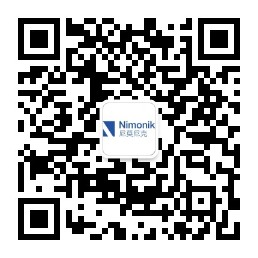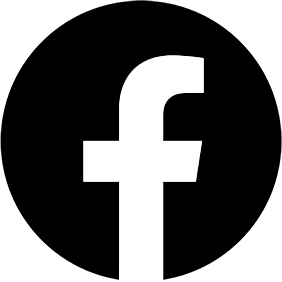
本期要闻 Highlights of the Month
国务院安全生产委员会近日发布《关于推动建立完善生产经营单位事故隐患内部报告奖励机制的意见》,要求2025年6月底前,推动煤矿、非煤矿山、石油天然气开采、化工(含石油化工)、医药、危险化学品、交通运输、建筑施工、燃气、工贸、电力等重点行业领域的生产经营单位建立并实施事故隐患内部报告奖励机制;2025年底前,推动其他行业领域生产经营单位建立并实施事故隐患内部报告奖励机制。
意见明确企业在建立事故隐患内部报告奖励机制时,应将报告重点内容聚焦在人的不安全行为、设施设备的不安全状态、环境的不安全因素、安全管理存在的缺陷和漏洞。要求企业明晰报告途径,灵活采用微信小程序、电话、电子邮箱等多种受理方式并在醒目位置向全员公示,简化报告程序、畅通报告渠道。对从业人员报告的事故隐患,生产经营单位负责人要及时与报告人员沟通、商研并组织核查,核查属实的要立即整改;无法立即整改的,要建立台账实行闭环管理,切实做到责任人、措施、资金、期限和应急预案“五落实”,严密防范事故发生。生产经营单位对从业人员报告的事故隐患及时进行奖励,要物质奖励和精神奖励相结合,鼓励“小隐患小奖,大隐患大奖”,对报告重大事故隐患等突出问题的予以重奖。
自2025年起,生产经营单位事故隐患内部报告奖励机制将成为常态管理,其实施的有效性将纳入年度安全生产考核巡查内容。
The State Council’s Work Safety Committee recently issued the “Opinions on Promoting the Establishment and Improvement of Internal Reporting Reward Mechanism for Potential Safety Hazards in Production and Business Units”, which requires key industries such as coal mines, non-coal mines, oil and gas extraction, chemical (including petrochemical), pharmaceutical, hazardous chemicals, transportation, construction, city gas, trade and industry, and power industry to establish and implement the reporting reward mechanism by the end of June 2025, and other industries by the end of 2025.
The Opinions emphasizes that the reporting reward mechanism shall focus on unsafe human behaviors, unsafe facility conditions, unsafe environmental factors, and safety management defects and vulnerabilities. Companies shall clearly define reporting channels, using various methods such as WeChat mini-programs, phone calls, and emails. Channels should be publicized prominently. Company leaders must promptly communicate, research, verify reported hazards and take immediate corrective actions for verified issues. For issues that cannot be rectified immediately, a closed-loop management system shall be established with clear responsibilities, measures, funds, deadlines, and emergency plans to prevent accidents. Employees reporting potential hazards shall be rewarded both materially and spiritually, encouraging “small rewards for small hazards and substantial rewards for substantial hazards”.
From 2025 onwards, the internal reporting reward mechanism will become a standard management practice, and will be included in the content of annual work safety assessment.
最新国家法律法规National Updates
公告规定企业在2024年1月1日至2027年12月31日期间发生的节能节水、环境保护、安全生产专用设备数字化、智能化改造投入,不超过该专用设备购置时原计税基础50%的部分,可按照10%比例抵免企业当年应纳税额。企业当年应纳税额不足抵免的,可以向以后年度结转,但结转年限最长不得超过五年。
The announcement stipulates that for investments in digital and intelligent transformation of special equipment for energy saving, water saving, environmental protection, and work safety made from January 1, 2024, to December 31, 2027, up to 50% of the original taxable base of the equipment can be deducted at a 10% rate from the corporate income tax for that year. If the tax deduction exceeds the payable tax for the year, it can be carried forward to subsequent years, but no more than five years.
最新国家标准 Latest National Standards
化学品分类和标签规范 第1部分:通则 – GB 30000.1-2024
Specification for Classification and Labelling of Chemicals—Part 1:General Rules
修改单新增了邻苯二甲酸苯基丁基酯(DBP)、邻苯二甲酸二异丁酯(DIBP)、邻苯二甲酸甲苯基丁酯(BBP)和邻苯二甲酸二(2-乙基己基)酯(DEHP)四类有害物质的限值要求,更新了电子电气产品有害物质检测方法标准。
The Amendment adds limit for four hazardous substances: dibutyl phthalate (DBP), diisobutyl phthalate (DIBP), butyl benzyl phthalate (BBP), and di(2-ethylhexyl) phthalate (DEHP) and updates the testing methods of harmful substances in electrical and electronic products.
立法草案 Policy Initiatives & Developments
国家方案主要包括总体要求、全生命周期管理和保障措施三部分。方案围绕消耗臭氧层物质全生命周期管理提出4个重点方面11项具体内容。一是加强源头管控,严格管理管控物质的生产和销售。二是加强过程控制,强化管控物质使用管理。三是完善末端治理,加强维修、回收、再生利用和销毁管理。四是加强进出口管理,防范管控物质贸易风险。总体思路是通过生产管理加强源头管控,通过使用过程管理推动绿色发展,通过末端治理加强全生命周期监管,通过加强进出口监管防范贸易风险,推动国家履约目标实现。The national plan mainly includes three parts: general requirements, life-cycle management and safeguard measures.
The plan proposes 11 specific contents in four key aspects around the life-cycle management of ozone-depleting substances. First, strengthen source control and strictly manage the production and sales of restricted ODSs. Second, strengthen process control and strengthen the management of the use of the restricted ODSs. Third, improve end-of-pipe treatment and strengthen maintenance, recovery, recycling, utilization and destruction management. Fourth, strengthen import and export management to prevent trade risks of the restricted ODSs. The overall idea is to promote the realization of national compliance goals by strengthening source control through production management, by promoting green development through the use of process management, by strengthening life-cycle supervision through end-of-pipe treatment, and by preventing trade risks through strengthening import and export supervision.
化学物质环境风险评估与管控技术标准体系由三个部分组成:一是化学物质环境风险筛查技术标准子体系,服务于化学物质环境风险筛查,规范和指导优先评估化学物质的筛选工作;二是化学物质环境风险评估技术标准子体系,服务于化学物质环境风险评估,是识别高环境风险化学物质即新污染物的具体方法标准;三是新污染物环境风险管控技术标准子体系,服务于新污染物环境风险管控措施的制修订工作,按管控措施将技术标准分为源头禁限类、过程减排类及末端治理类。
“The Technical Standard System for Environmental Risk Assessment and Control of Chemical Substances” consists of three parts: the first is the technical standard subsystem of chemical substances environmental risk screening, which serves the environmental risk screening of chemical, standardizes and guides the screening of prioritized chemical assessment; the second is the technical standard subsystem of chemical environmental risk assessment, which serves the environmental risk assessment of chemical, and is a specific method standard for identifying high environmental risk chemical, i.e. new pollutants; the third is the technical standard subsystem of new pollutants environmental risk control, which serves the formulation and revision of environmental risk control measures for new pollutants, and divides the technical standards into the categories of source prohibition and restriction, process emission reduction and end-of-pipe treatment according to the control measures.
《涂料中有害物质限量 第1部分:建筑涂料(征求意见稿)》规定了建筑涂料及其辅助材料中对人体和环境有害的物质容许限量所涉及的产品分类、要求、测试方法、检验规则、包装和标志、文件的实施。《涂料中有害物质限量 第2部分:工业涂料(征求意见稿)》首次将与人体密切接触的消费产品用涂料纳入工业涂料的强制性国家标准适用范围,并聚焦氟涂料、特殊功能性涂料等重点问题。本标准规定了工业涂料及其辅助材料中对人体和环境有害的物质容许限量所涉及的产品分类和涂层危害性标记、要求、测试方法、检验规则、包装和标志、文件的实施。本文件将代替GB 30981-2020,GB 18581-2020,GB 24409-2020,GB 38469-2019和GB 24613-2009。“Limit of Harmful Substances of Coating Materials Part 1: Architectural Coatings (Consultation Paper)” specifies the product classification, requirements, test methods, inspection rules, packaging and marking, and implementation of documents related to the permissible limits of substances harmful to human health and the environment in architectural coatings and their auxiliary materials.“Limit of Harmful Substances of Coating Materials Part 2: Industrial Coatings (Consultation Paper)” for the first time includes coatings for consumer products that are in close contact with the human body into the scope of application of the mandatory national standard for industrial coatings. It also focuses on key issues such as fluorine coatings and special functional coatings.The Standard specifies the product classification and coating hazard marking, requirements, test methods, inspection rules, packaging and marking, and implementation of documents related to the permissible limits of substances harmful to human health and the environment in industrial coatings and their auxiliary materials.
This document will replace GB 30981-2020, GB 18581-2020, GB 24409-2020, GB 38469-2019 and GB 24613-2009.
指南面向一般工业固体废物产生、贮存、运输、利用、处置全过程,分别提出规范化环境管理要求。内容主要涉及环境影响评价制度、排污许可制度、清洁生产制度、管理台账制度、贮存管理、利用处置管理、转移管理、产生单位内部管理、信息公开制度等方面。
The Guidelines puts forward standardized environmental management requirements for the entire process of general industrial solid waste generation, storage, transportation, utilization and disposal. The content involves environmental impact assessment system, pollutant discharge permit system, clean production system, management account system, storage management, utilization and disposal management, transfer management, internal management of generating units, information disclosure system and other aspects.
最新地方性法规 Regional Updates
上海市:上海市水平衡测试管理规定Shanghai Municipality: Shanghai Water Balance Test Management Regulations
规定要求日取水量15万立方米及以上的取水单位和年用水量30万立方米及以上的用水单位,应当每五年开展一次水平衡测试工作。取用水单位应当编制水平衡测试报告书;水平衡测试和整改情况应当自测试整改完成之日起十五日内向管理部门备案。The Regulations requires enterprise with a daily water intake more than 150,000 cubic meters and water consumption units with an annual water consumption more than 30 million cubic meters to conduct a water balance test every five years.
Enterprises shall prepare water balance test reports. The test and rectification results shall be filed with the management department within fifteen days of completion.
天津市为促进工贸行业企业安全生产标准化体系持续有效运行,加强标准化建设定级事中事后监管,制定了《天津市工贸行业安全生产标准化等级企业动态管理制度(试行)》。制度要求各区应急管理局按照属地原则,每年参照《工贸行业安全生产标准化等级企业运行质量评估指南》按比例评估辖区内的企业,对构成撤销等级情形的安全生产标准化三级企业,按照程序公告撤销原有等级;对构成撤销等级情形的安全生产标准化二级企业,应及时书面上报市应急管理局,由市应急管理局按照程序公告撤销原有等级。除了《评估指南》,通知还针对冶金、有色、建材、机械、轻工和纺织行业给出的具体的《行业现场重点设施设备检查要求(试行)》,供企业对照参考。Tianjin Municipality has formulated the “Dynamic Management System for Work Safety Standardization Levels of the Trade and Industry Sector (Trial)” to promote the continuous and effective implementation of the work safety standardization system and strengthen mid-term and post-event supervision. The system requires that the emergency management bureaus of each district conduct annual assessment to the enterprises in proportion within their jurisdiction according to the “Guidelines for Quality Assessment of Work Safety Standardization Level Enterprises in the Industry and Trade Sector (Trial)”. For enterprises that meet the criteria for downgrading from the work safety standardization level 3, the original level should be revoked according to the prescribed procedures. For enterprises that meet the criteria for downgrading from the work safety standardization level 2, a written report should be promptly submitted to the municipal emergency management bureau, which will then revoke the original level according to the prescribed procedures.In addition to the “Assessment Guidelines”, the notice also provides specific “Inspection Requirements for Key Facilities and Equipment in the Trade and Industry Sector (Trial)” for the metallurgy, non-ferrous metal, building materials, machinery, light industry and textile industries for reference.
本法规月刊是由伊尔姆环境资源管理咨询(上海)有限公司(ERM)、Nimonik 安纬同(上海)管理咨询有限公司(Nimonik)与大成律师事务所上海分所(Dentons Shanghai)联合制作。我们在确保其内容准确无误的同时,不对其任何可能的错误或疏忽承担责任。本刊中的内容不可作为法律依据,亦不可视为对个案的释义。因参考本刊物内容导致的任何损失,ERM, Nimonik 与大成律师事务所将不承担任何责任。如需寻求专业意见,请咨询有关专业顾问。
This newsletter is prepared for clients and professional associates by ERM, Nimonik and Dentons Shanghai. Whilst every effort has been made to ensure accuracy, no responsibility can be accepted for errors and omissions, however caused. The information contained in this newsletter should not be relied on as legal advice and should not be regarded as a substitute for detailed advice in individual cases. No responsibility for any loss occasioned to any person acting or refraining from action as a result of material in this newsletter is accepted by ERM, Nimonik or Dentons Shanghai. If advice concerning individual problems or other expert assistance is required, the services of a competent professional adviser should be sought.







 沪公网安备31010602007801
沪公网安备31010602007801